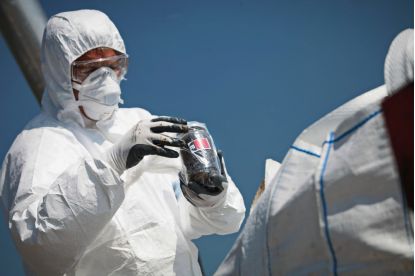Asbestos is a highly heat-resistant mineral that occurs naturally in all seven continents of the world. It occurs in six silicate minerals. Research shows that the history of asbestos use dates way back to 4000 B.C. because of its excellent insulative abilities, asbestos used to be a popular building material. However, its use has declined over time because of the rise of asbestos-related deaths. Approximately 107,000 deaths globally are caused by occupational exposure to asbestos every year. As a result, there has been a surge of increased asbestos awareness training to equip workers and other people with information on the health effects of asbestos and how to protect themselves. Find about the history of asbestos awareness.
How Asbestos training awareness has developed over time
In the past, large organizations covered up the harmful effects of asbestos. Some employers were also unaware of the hazards that asbestos posed to their health and that of their employees.
For the general public, the available asbestos awareness was either little or not there at all. As a result, many people (mostly workers in asbestos-related industries) died from diseases caused by exposure to asbestos. The most common disease caused by asbestos exposure is mesothelioma, which is an aggressive form of lung cancer.
Another reason that could be responsible for the delayed awareness training is that symptoms of asbestos-related diseases may not show until many years after initial exposure, which could be anywhere after 25 years. This explains the reason why people who worked in asbestos-related industries in their youth get such diagnoses in old age.
Over time, research proved the devastating effects of asbestos exposure. By 1930, the connection between asbestos and lung cancer had already been established. These health risks started to be published, and more people became aware by the 1960s. In the 1980s, governments started weighing into the matter. Consequently, mining of asbestos and the use of different forms of the mineral has been prohibited in many countries.
To manage the fatal consequences of asbestos, those who work in places where they could be exposed to asbestos need adequate training. Training could range from asbestos awareness and management to non-licensed removal of asbestos.
What is the need for asbestos awareness training?
Practical asbestos awareness training should cover the following areas:
- Properties of asbestos.
- The types of asbestos.
- The occurrence of asbestos in buildings.
- The health effects of asbestos.
- Minimizing accidental disturbance and avoiding the risk of asbestos exposure.
- Dealing with an emergency when asbestos dust gets released into the workplace.
- Laws and regulations governing asbestos.
Who needs asbestos awareness training?
History of asbestos awareness training mostly targets employees who are at risk of being exposed to asbestos. These are employees whose work has the possibility of potentially destroying the fabric of a building such as engineers, builders, painters, electricians, plumbers, general maintenance workers, and architects. Demolition workers are an essential component of asbestos training since they face the most significant risk of exposure.
Managers and other senior personnel should also undergo training because they send their workers to sites and also supervise them.
However, any other person can undertake asbestos awareness training since anyone can also interact with asbestos.
The current state of asbestos awareness training
Apart from asbestos awareness, workers who work in places that could disturb asbestos also need comprehensive instruction and training. The type of training is dependent on whether licensed, non-licensed, or notifiable non-licensed. The training should also be tailored to fit a specific job.
Licensed work
Licensed contractors should carry out work involving a higher risk of asbestos-containing materials. Workers and managers should be equipped with suitable information and training and the proper usage of respiratory and other protective equipment.
Non-licensed work and Notifiable non-licensed work (NNLW)
This level of information and training is for the workers like electricians, plumbers, engineers, architects, painters, and builders, whose work may disturb asbestos. Such work includes removing floor tiles, repairing cement, laying cables, and drilling holes, because such work is done in environments that may have asbestos-containing material.
Such training should cover, legal requirements, emergency response, waste disposal methods, the choice of protective equipment, and also how to properly use protective equipment. It should also include safe work practices and control measures and the circumstances that may necessitate a non-licensed work to be notifiable.
Before undertaking any licensed, non-licensed work or NNLW, employers should ensure that workers see a copy of the work plan, a copy of the risk assessment report and if possible, the details and results of similar work.
Workers may also request to be furnished with maintenance records, their health records, a copy of their training records, and results for any face-fit test they underwent.
It is worth noting that it is crucial to have periodical refreshing of information, instruction, and training. Even though it is not a legal requirement for that, an annual refresher course ensures that all the information learned on asbestos management is not forgotten. The best way to do this will be through health and safety updates.
When it comes to undertaking asbestos awareness training, be sure to find a competent trainer who is well equipped with knowledge regarding the history of asbestos.









